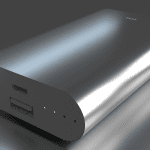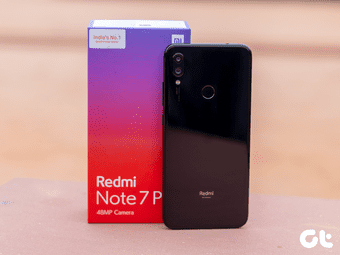So, here we are with the list of things that you need to check before buying a new Android phone in 2020 As it’s going to be a long post, let’s jump straight to it, shall we?
1. Processor
We all know that the processor is one of the most important hardware components that you need to check while buying a smartphone. Yes, it needs to be of top-notch quality and the likes, but is it always the scenario? Well, not always. You should always pick a phone with a processor that suits your requirements. For instance, if you’re just looking for a phone to perform basic things like Voice calls and using native apps like WhatsApp, you’d be pretty much satisfied with a mid-range chip. However, if you want to play high-demanding games or multi-task without any hiccups, then you’ll have to stick with one of the flagship processors. Again, while picking a phone with a high-end processor, you should also check its architecture design, core performances, low-power cores, battery efficiency, and the clock speed. At the time of writing, the Qualcomm Snapdragon 855+ (the successor to the popular Snapdragon 855) is one of the best processors available out there. And well, the OnePlus 7T is one of the first phones to sport this flagship processor. But on the flip side, should you decide to invest in a budget processor, you can opt for mid-range chips like the Snapdragon 712 or the Exynos 9611. Unlike the flagships, these do not cost much, and the performances are also decent.
2. Storage and RAM
Do you want apps and games to open in the speed of light, no matter when you opened them last? And at the same time, handle multi-tasking like a boss? If yes, you are looking at a phone which packs at least 6GB of RAM. You can also buy a phone with 8GB of RAM, if you want to add gaming to the list. However, in the present scenario, RAM more than 8GB will be a bit of an overkill. Again, 4GB of RAM will be ideal for a budget device. Buy something with less RAM, and you’ll see apps taking time to launch or lagging while multi-tasking. Secondly, check the type of storage on your phone. Currently, there are two types of storage UFS and eMMC. UFS delivers significantly faster read and write speeds, and is the new standard that’s used these days. Plus, most mid-range devices these days offer at least UFS 2.1 storage, with flagship devices offering UFS 3.0 storage. Lastly, the storage space entirely depends on the amount of data you’ll be storing on your phone. If you’re someone who downloads a lot of songs, movies, and videos, then 32GB or 64GB of storage should be quite sufficient. However, if you wish to install several high-end games, then you might want to get one with 128GB or more.
3. Display — LCD or AMOLED
Up next is the display type. As of now, you can choose from two types — LCD or AMOLED. And well, the distinction must be quite clear to you by now. If you are looking for a premium experience, you should go with an AMOLED display. Not only does it bring rich and colorful colors, but it also helps saving battery life. Initially, AMOLED screens were only found on flagships. Now, thankfully, this technology has made its way to some mid-range and budget phones as well. For instance, the Samsung Galaxy M30s boasts of an AMOLED display. And mentioned above, the AMOLED displays also result in better battery life with the way they manage a backlight, unlike LCD screens. Each pixel on an AMOLED panel is lit individually. So if you use a black wallpaper, then the phone won’t use as much battery to display the wallpaper as it would with an LCD.
4. Battery
Do we even need to get started? After all, what is a phone if it can’t even last you one whole day, right? Thankfully, phone batteries have come a long way. Today, a typical 3500mAh battery should be enough to last you an entire day, provided you do not spend your whole day bingeing on Netflix. But anything less than 3000mAh, you might have to carry a battery pack around with you. Apart from that, you should also pay attention to the device’s charging speed. Does it support fast charging? If yes, does it come with a fast charger in the box? Will you have to buy it separately? For budget phones, support for 15-watt fast charging is a blessing. And if you look up at slightly premium phones, you’ll see 20 watts charging or proprietary charging standards like Dash Charge, VOOC Charge, etc. For the mid-range devices, 18 watts fast charging support is a good enough number.
5. Cameras
Over the year, camera tech has improved significantly. Now, even budget and mid-range phones boast of 48MP or 64MP primary shooters. But at the end of the day, does the megapixel count really really matter? The answer is both yes and no. Yeah, with a high megapixel count, you’ll be able to capture large-sized photos that you can print. Again, this doesn’t necessarily mean that phones with a bigger megapixel count will deliver better photos. For instance, take the case of the Google Pixel 3, which is widely accepted as the best smartphone in the camera department. But it just packs a single 12.2MP sensor, while its competitors pack an array of camera modules. The bottom line is, instead of focusing on the megapixel count, you should check the aperture and the pixel size. The mantra is simple — a good camera module will have a small aperture value and large pixel size. Smaller the aperture value, the better it is and vice-versa for pixel size. For instance, if a camera has an aperture of f/1.7 and the other has f/2.0, you should go with the first. Lastly, if you plan on capturing video on your phone, you should also check if the camera modules support OIS and EIS. Though budget phones often skip adding these features, you’ll still find a couple of mid-rangers that offer at least EIS on the primary lens.
6. Software
Now, let’s focus on the software. Google just rolled out Android 10 this year, and the first wave of devices running the software is just hitting the market. So if your smartphone you are going to buy comes with Android 10, it’s all well and good. However, if you are on the market to purchase a slightly older device, do make sure that it runs at least Android 9 Pie out of the box. Other than that, you also have to take a look at the Android version. Does the phone run skinned versions like MIUI, OxygenOS, or OneUI? As you may already know, these skinned versions offer several additional features. You may either end up using all of them or not touching these features at all — entirely depends on your usage. I prefer OxygenOS since it packs a clean look and retains the near-stock Android look and feel. But many users swear by MIUI or other skins as well. If possible, try these software experience before actually buying the smartphone.
7. Widevine L1 Support
Last but not least, let’s peek into the Widevine L1 support and what it brings to the table. That is essentially a security measure implemented by streaming services to prevent piracy. So, if your phone doesn’t support Widevine L1 for watching Netflix, Prime Video or other services, you’ll only be able to stream video at 480p. Bummer?
Little Effort for Better Comfort
Well, there are hundreds of different things that you should check while buying a smartphone, like the build of the device, whether it fits your hands easily, etc. However, the one that tops it all is you shouldn’t go for a phone that is over a year old or more. And even if it is, do check when its peers received the last security patch. Next up: Planning to buy a power bank? Here are all the things you need to check before you buy one. The above article may contain affiliate links which help support Guiding Tech. However, it does not affect our editorial integrity. The content remains unbiased and authentic.























